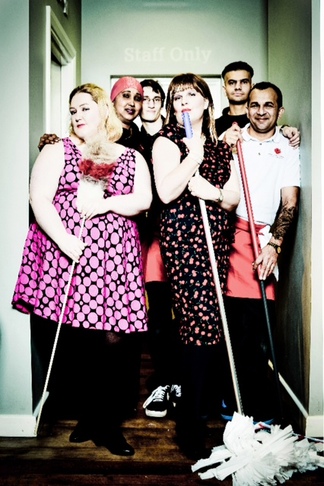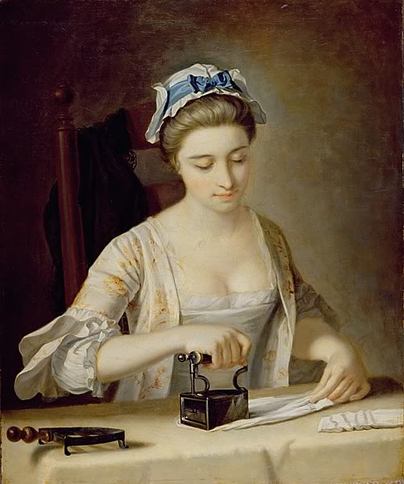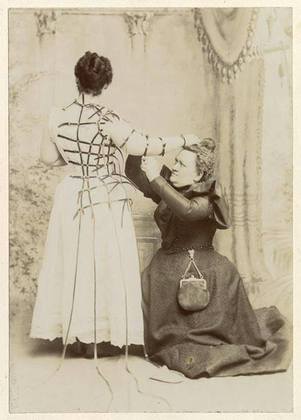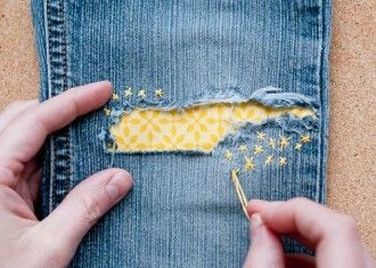|
Hannah Jackson-Matombe looks at how cleaning has changed over the past century Like many, I found myself in need of a cleaner while exhausted by pregnancy, and even more so when four children left me overwhelmed with mountains of washing and scribbled walls. But somehow, even with a cleaner the house was never really clean. It was partly my fault for thinking that one cleaner could keep my modest but over-stuffed home genuinely clean as well as neat and tidy with just six hours of cleaning a week. We found ourselves living with serious infestations of both food and clothes moths. And despite requests to limit their use, the quantity of toxic products used was leaving my children with skin rashes and blocked noses and me feeling seriously ill. It seemed rather a radical solution, but I gave up my profession as a …. and started doing the cleaning myself. I also did some research. I found for example that in 2010 the American internet journal Environmental Health reported that use of air fresheners and products for mould and mildew control were associated with increased risk of breast cancer. This report along with many others can be found at www.sciencedaily.com. I also realized that modern cleaning products are designed to do little more than limit bacteria and while the words "green", "organic" and "natural" are often used to describe them, but some of the ingredients are far from safe. It seems I was not alone in my problems. With more women working full time and so doing less cleaning, and houses with sealed windows, central heating and less space, seems to have led to a massive increase in asthma, eczema and hives, even it seems fertility problems. And there are certainly more moths, carpet beetles, bed bugs and more. These pests flourish in places left undisturbed by day to day cleaning, leaving them to flourish and ravage your furnishing and clothes. I started looking into more sustainable and traditional cleaning techniques, moth removal, bed bugs, dust mites and carpet beetles. And then I realized what I was really doing was returning to my roots. My nan was a professional housekeeper, her cleaning and household management skills so good that when he was widowed, her employer married her. Granny Beeton, as she was called by myself and my sisters, was an expert in household management who accorded cleaning a status it doesn’t get today and she would have given short shrift to most current cleaning ladies who do a few dishes and run the vacuum round the middle of the floor. Granny Beeton said that in the 18th- 19th century households in London had at least three or more cleaning staff, headed by the housekeeper. Pay would have been low and the employers rich, but this was not about keeping up appearances, it was about quality of life and health. She reported how staff would take furniture on to the street to make use of the effective deterrents of sunlight and fresh air, rugs would be beaten with brooms over washing lines, and the interiors or every room would be cleaned inside and out, including every last corner of wardrobes and drawers which were not stuffed overfull. Scented drawer liners and sachets of Lavender or Cedarwood kept the likes of moths and bed bugs at bay.
Kitchen benches and cupboards were scrubbed inside and out, removing built-up grease. Utensils were scrubbed and polished, light fittings were cleaned in minute detail, and the ovens were scrubbed with lemon oil. Household dust, which is largely made up of human skin and hair, was carefully removed, reducing sustenance for moths, dust mites and more. Even in the middle of the 20th century the deep clean was still popular among both middle and working classes, often with family members and friends helping each other. My mum was a very modern lady selling Tupperware part-time, but she and her siblings, headed by Granny Beeton, would organise deep cleans in each others’ homes. An added benefit of these sessions was that the mums were always completely on top of what the family had or needed - unlike me who recently discovered my four boys had around 50 pair of trousers between them, but very few t-shirts and no pants! As I researched I realized my daily cleaning wasn't what was required. It needed not just time, but also a team and a system. I roped in a few reluctant individuals to provide a deep clean of my kitchen and what took me more than a day on my own, took three people just four hours. And the results were amazing; we cleared the moth infestation and to ensure no further infestations I put phermone stickers in the cupboards to catch male moths and stop them breeding. Find out more www.spotlessorganic.com/
1 Comment
Well, if everyone mended and altered we wouldn’t be here – most people don’t have the time or the resources. Here are a few tips:
 Go Through Your Wardrobe - Make-Do and Mend, c.1942. The Ministry of Information launched a campaign, Make-Do and Mend, to help people deal with clothes rationing. Posters and leaflets encouraged women to repair and renovate their old clothes, and offered helpful suggestions for how to create new outfits for themselves and their children from worn-out clothes and scraps of fabric. |
The Wardrobe CuratorAll the latest news, tips and advice from Julia Dee. Archives
October 2018
Categories |
|
"My jumpers arrived back on Friday, only 8 days after I posted them to you and I am delighted with the results- I cannot even find the repair on two of them - amazing ! Thank you and your team so much for such a fantastic service!"
Wonderful feedback from one of our customers!! |








